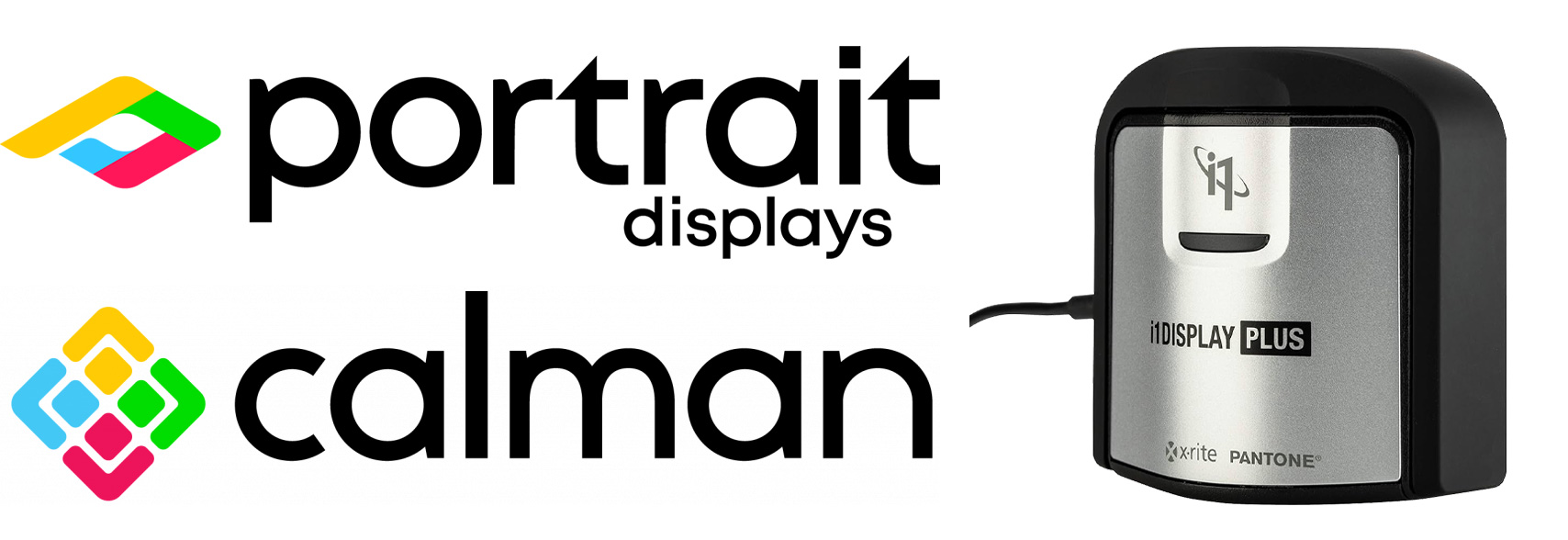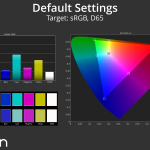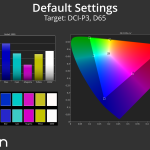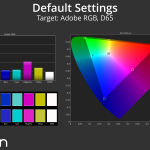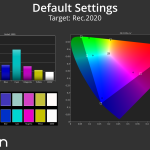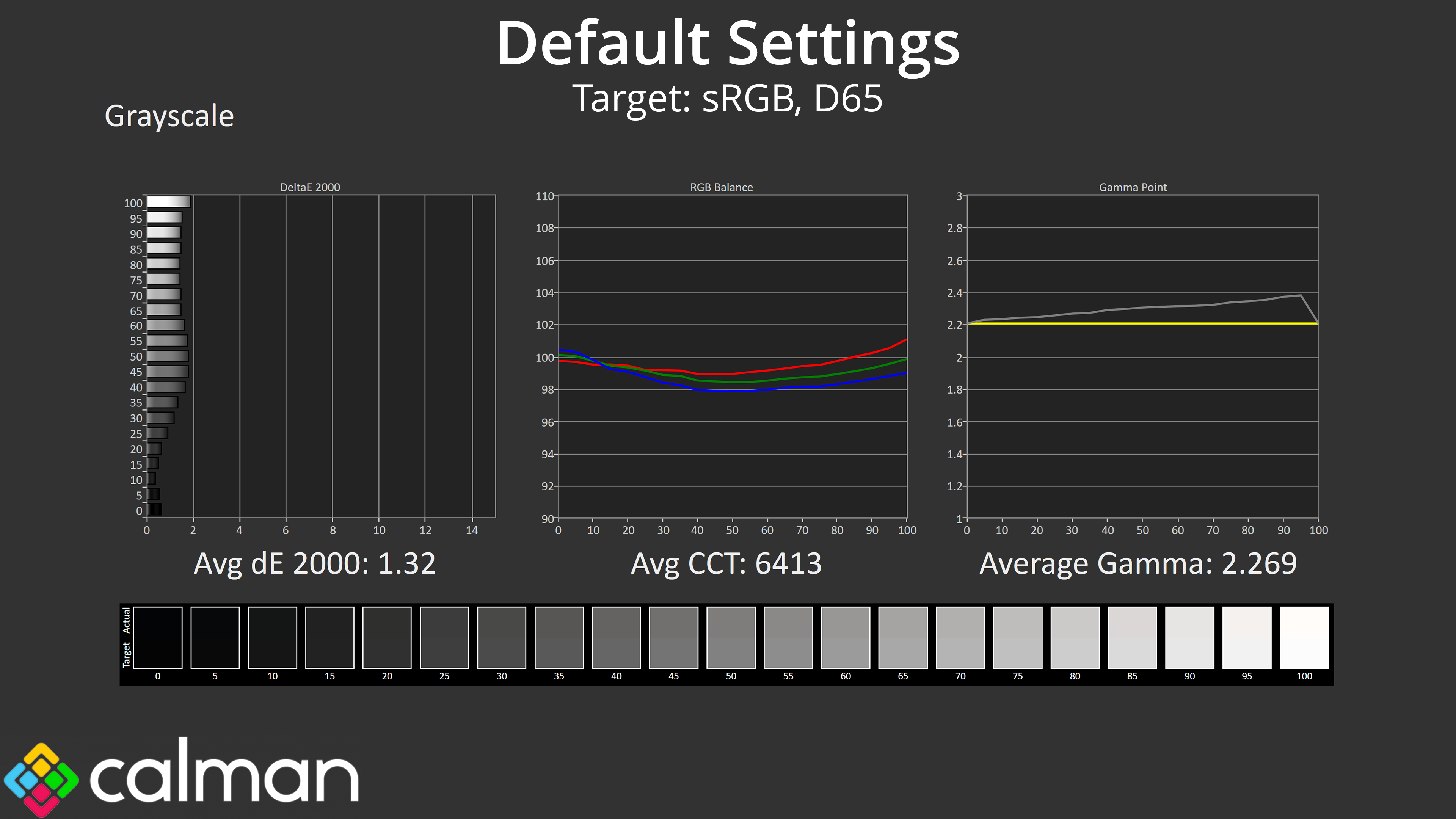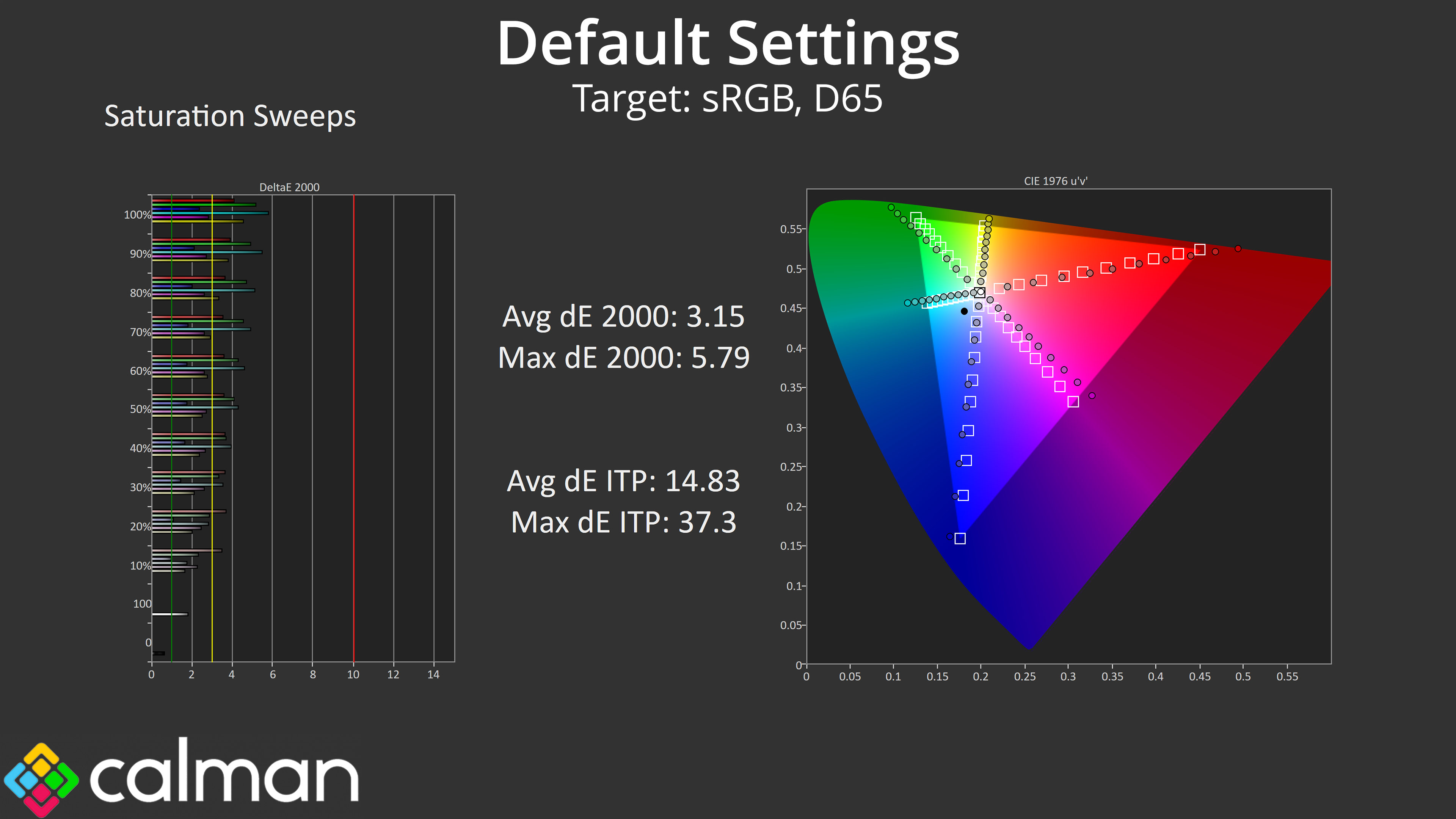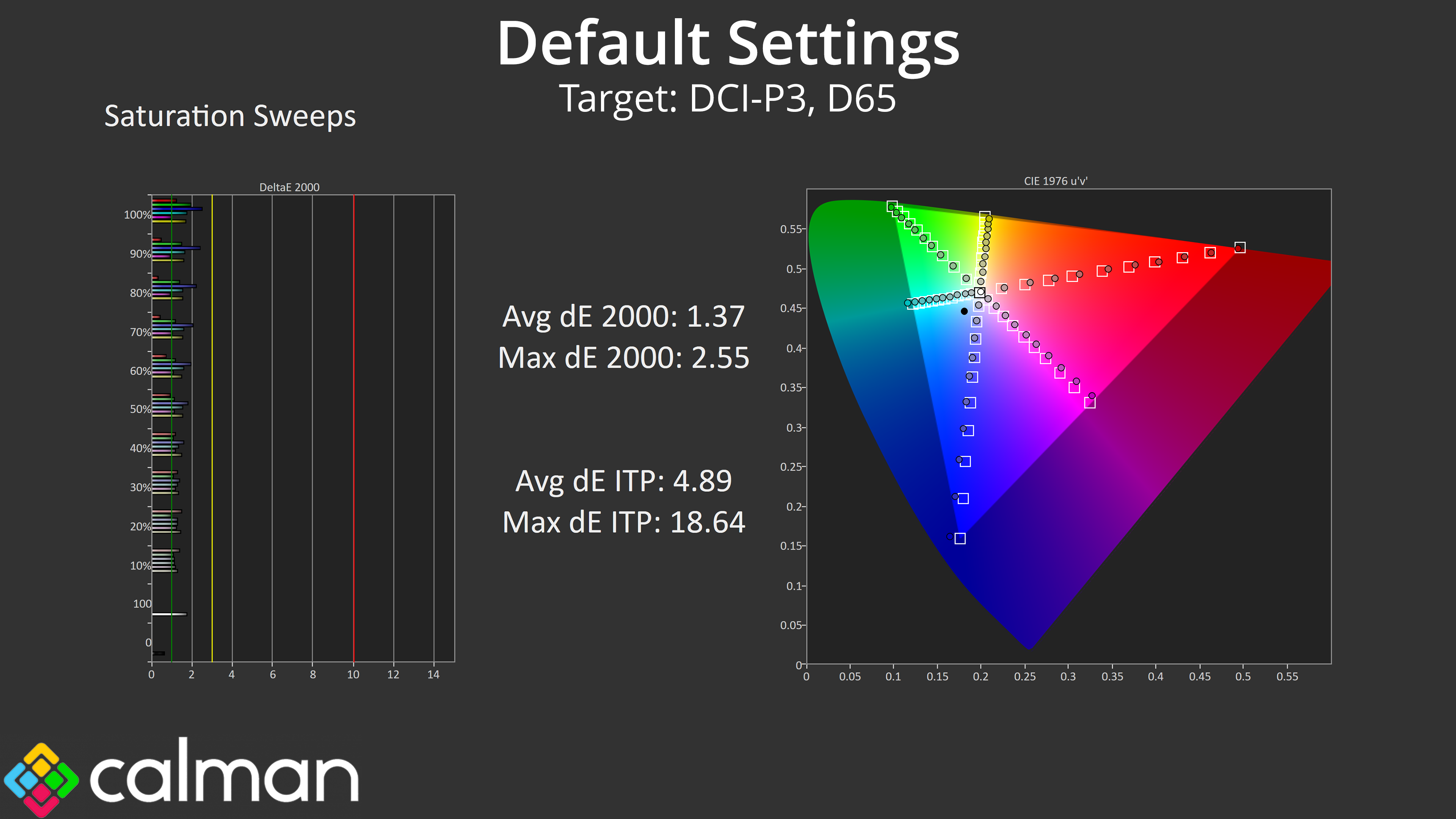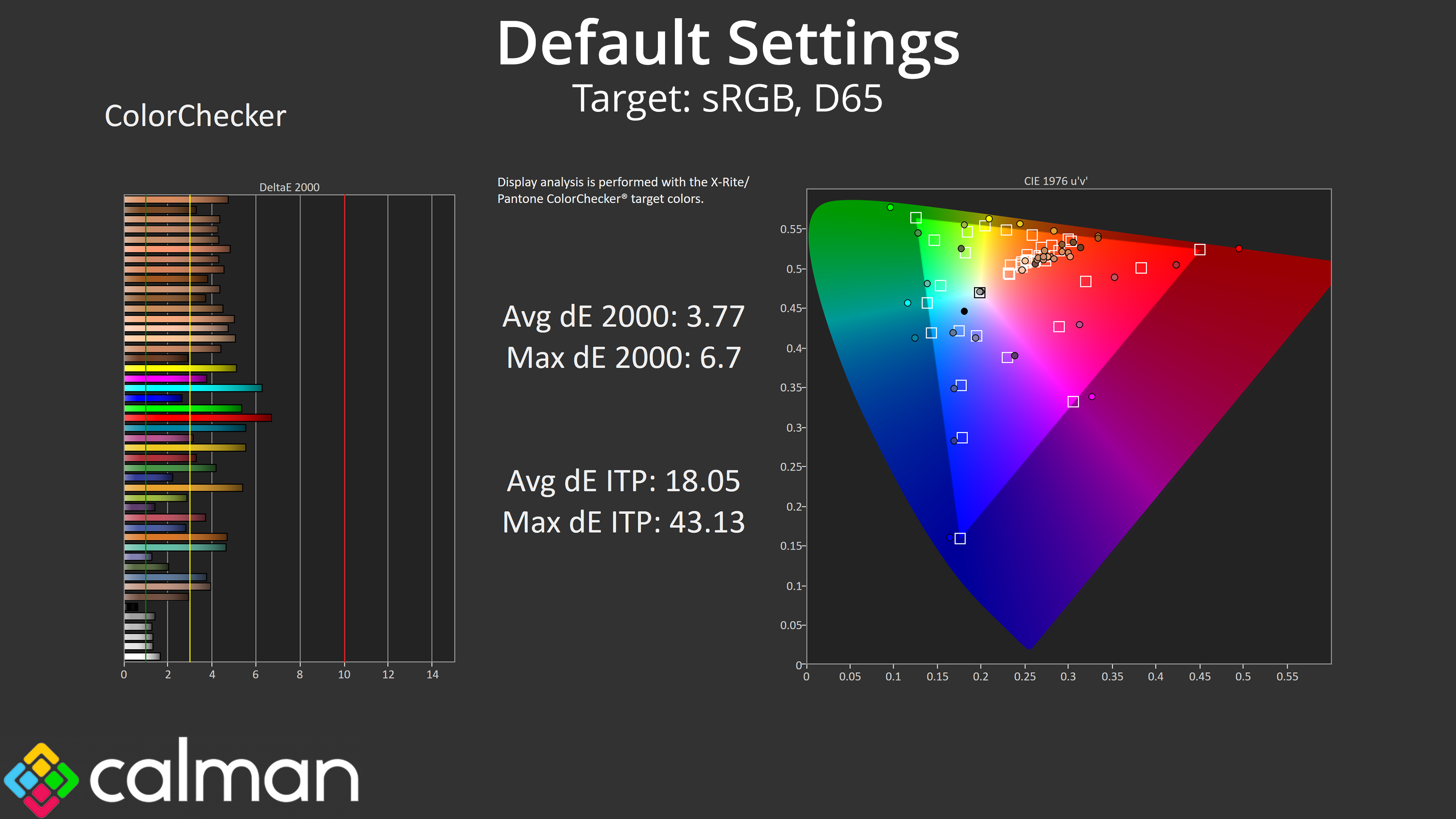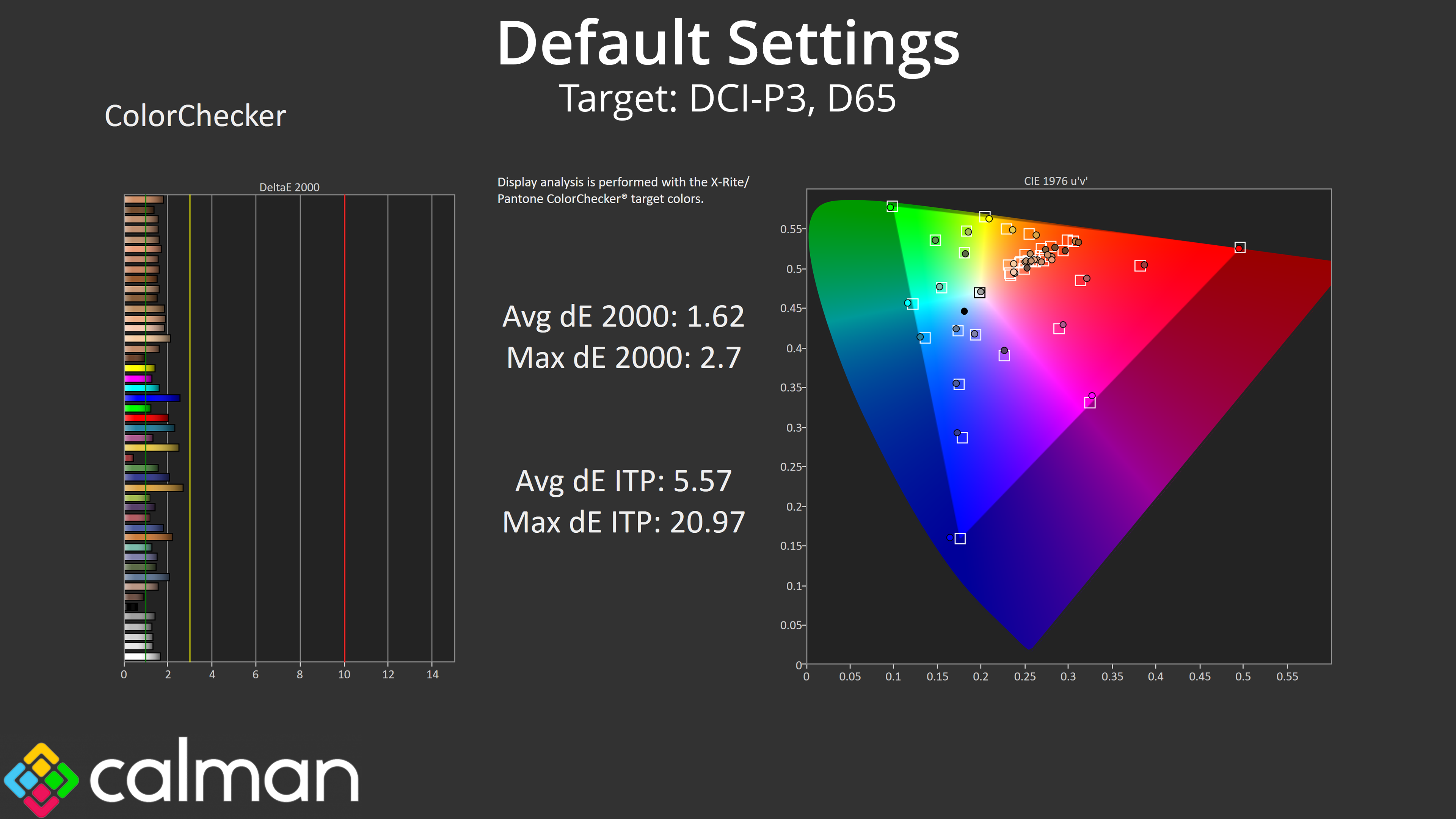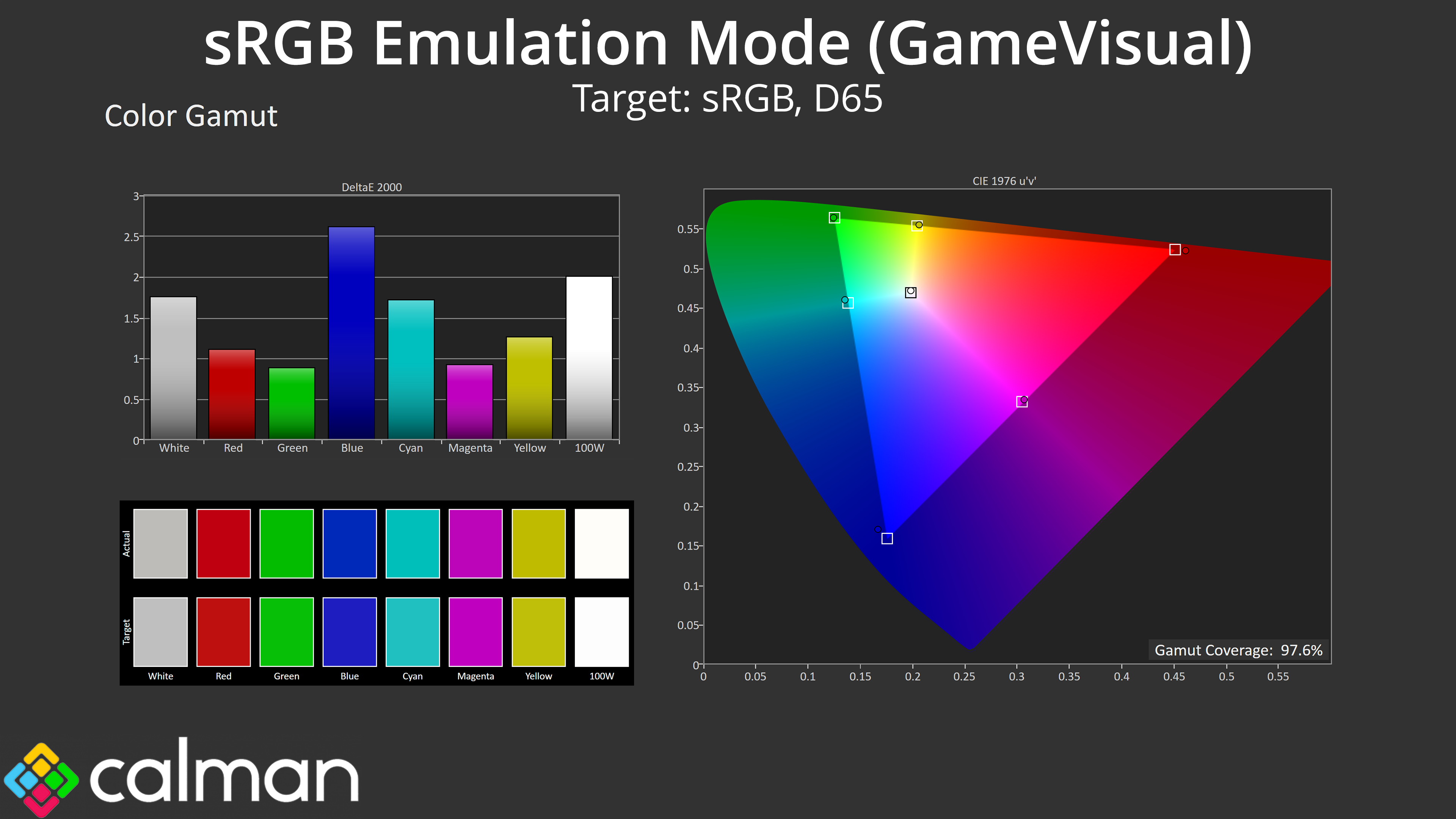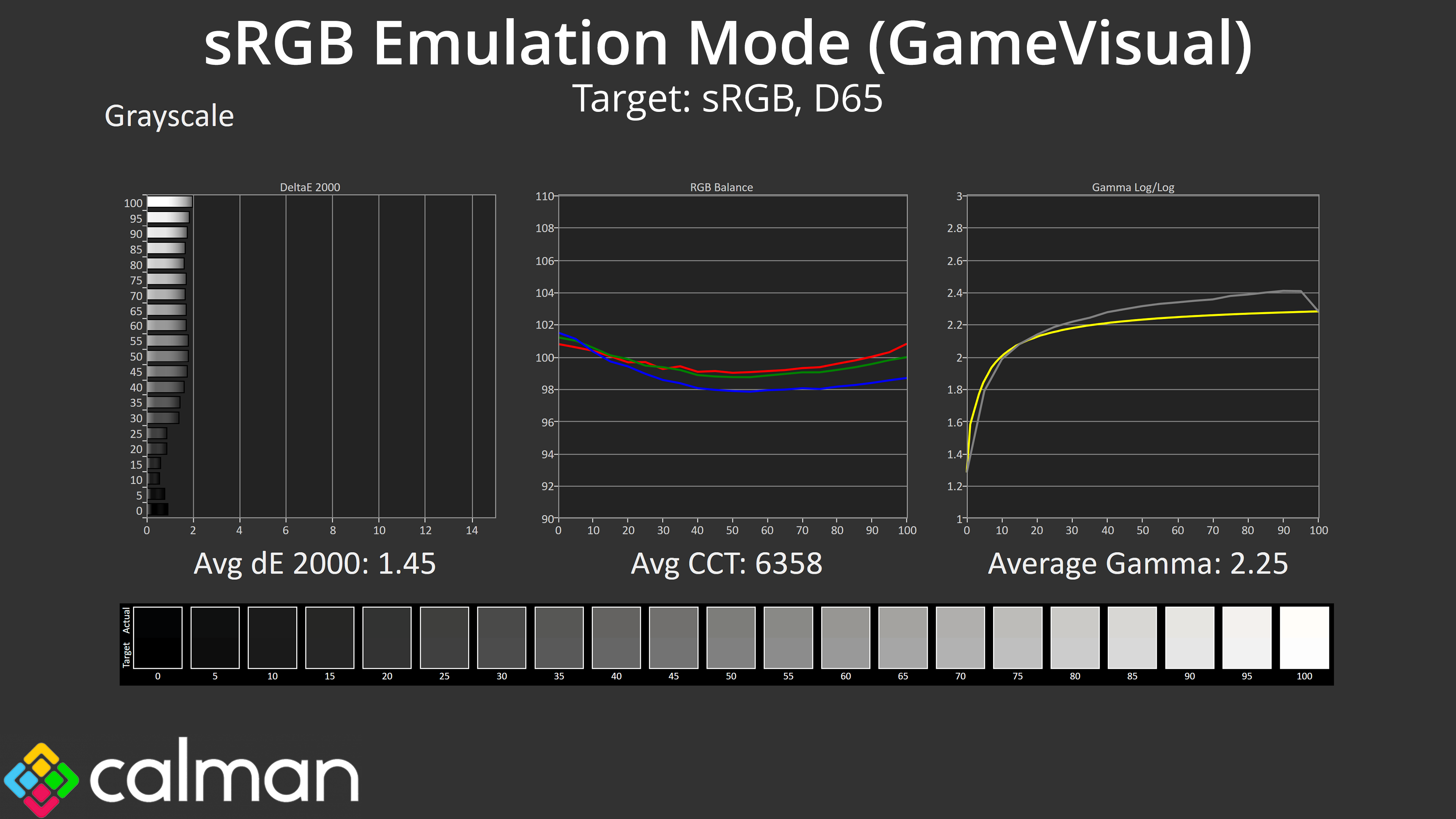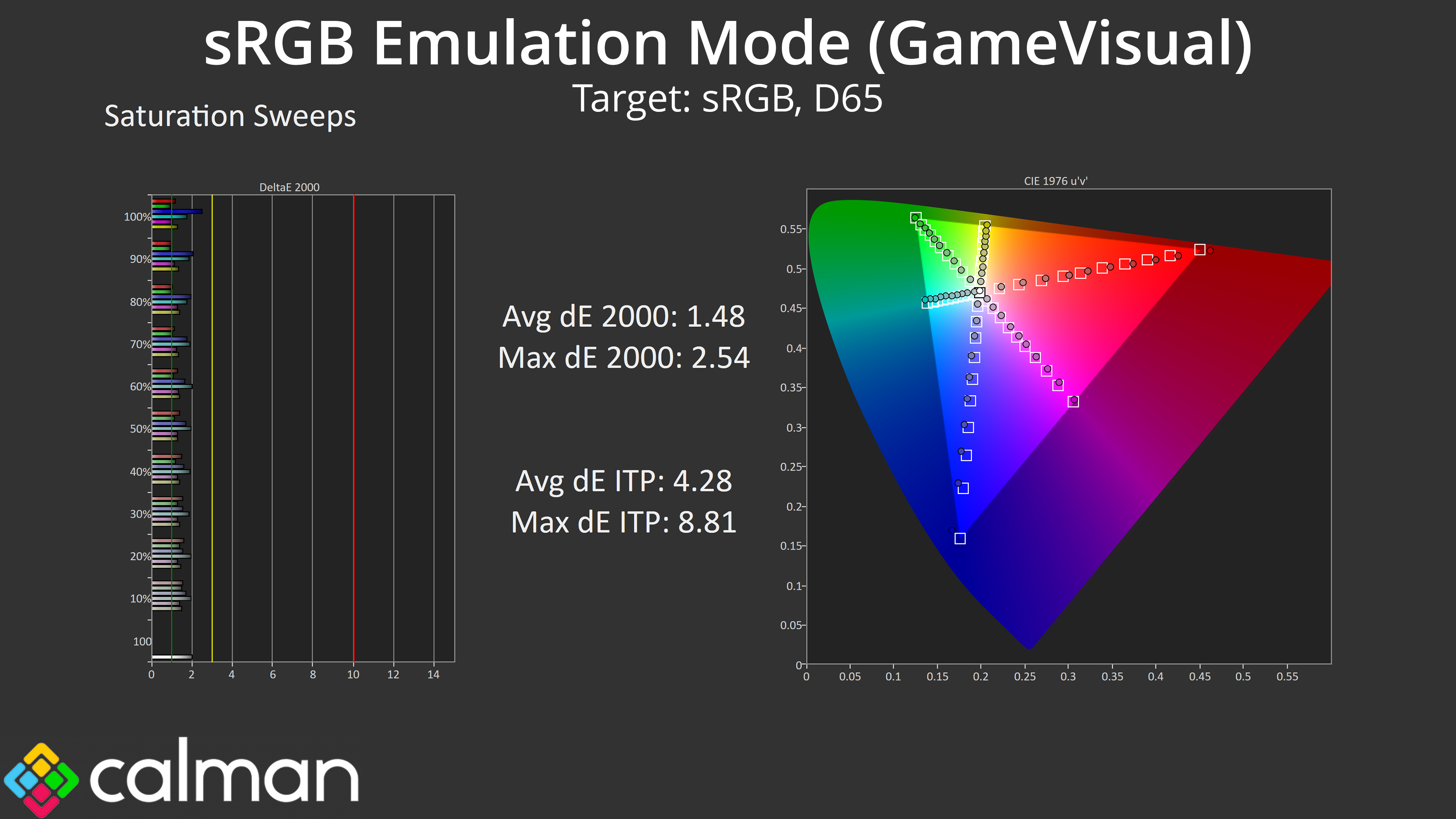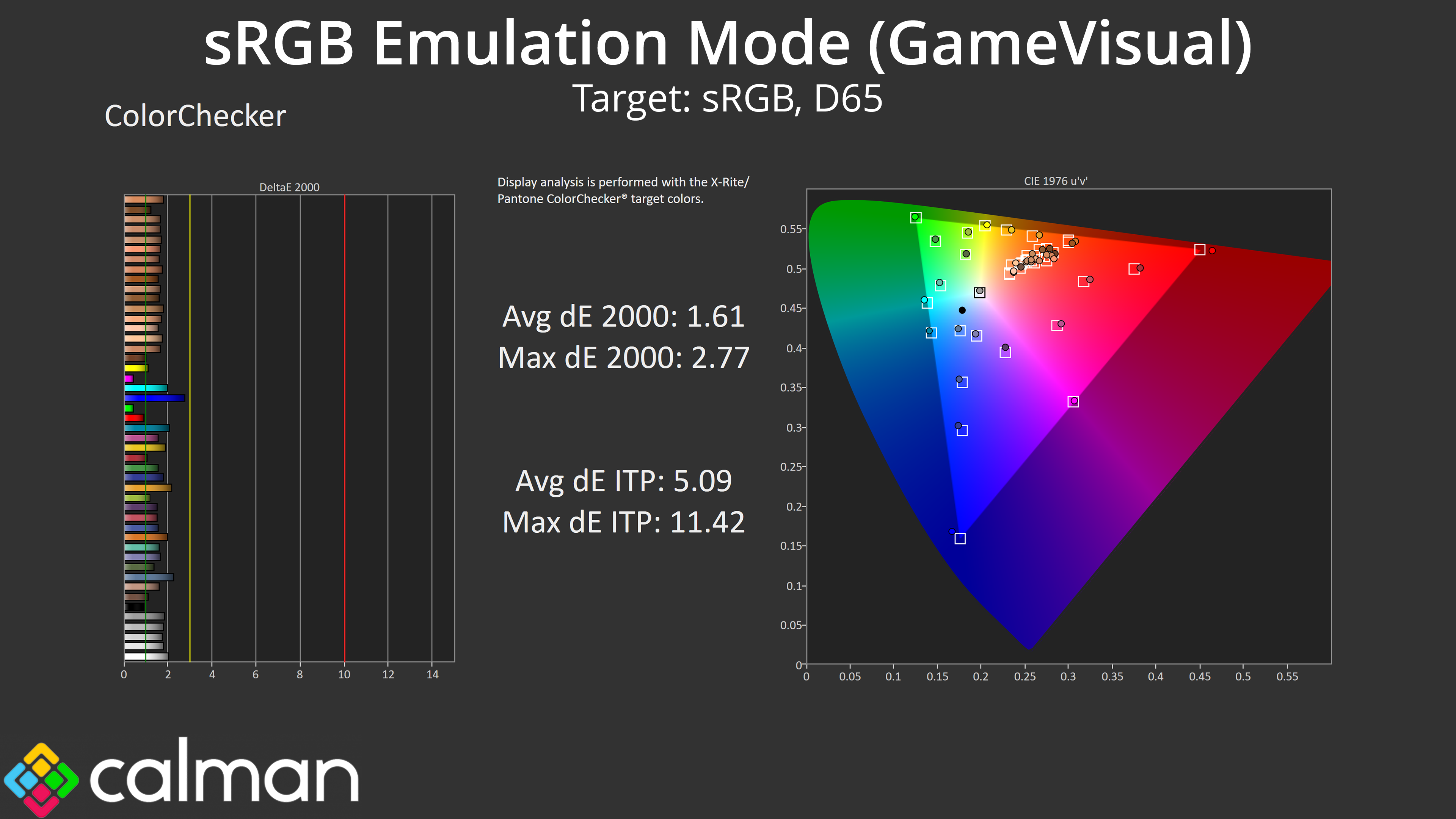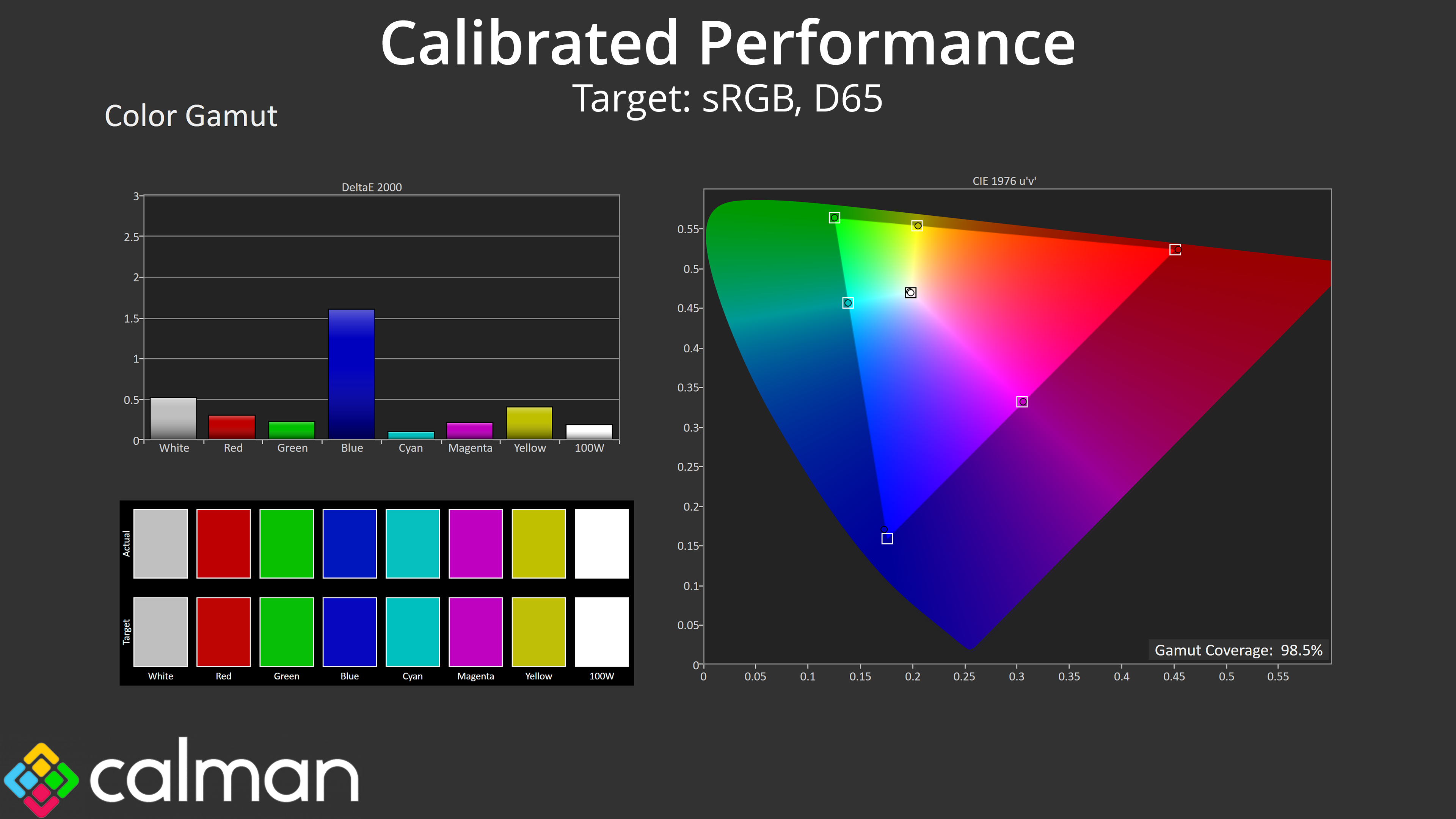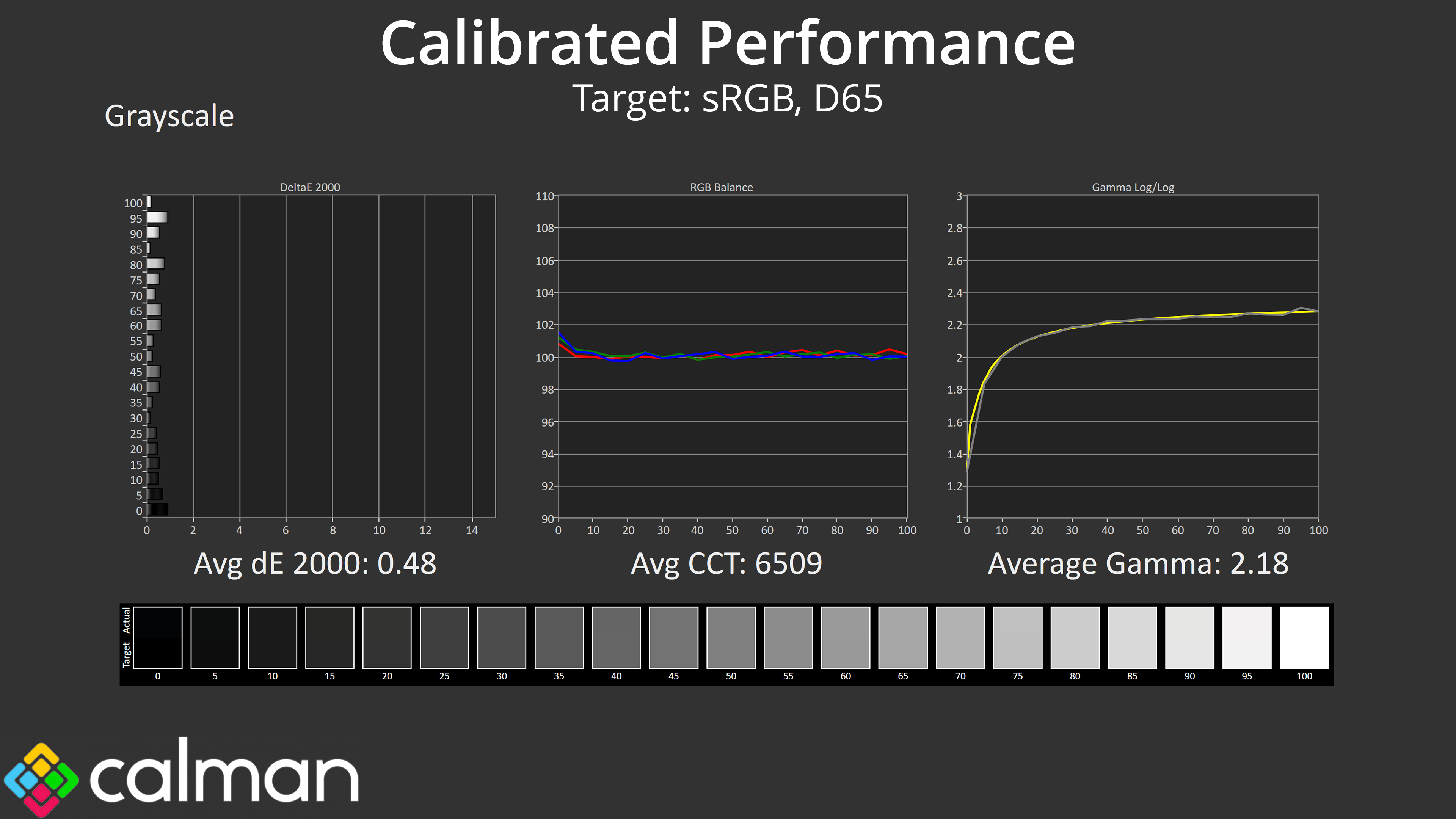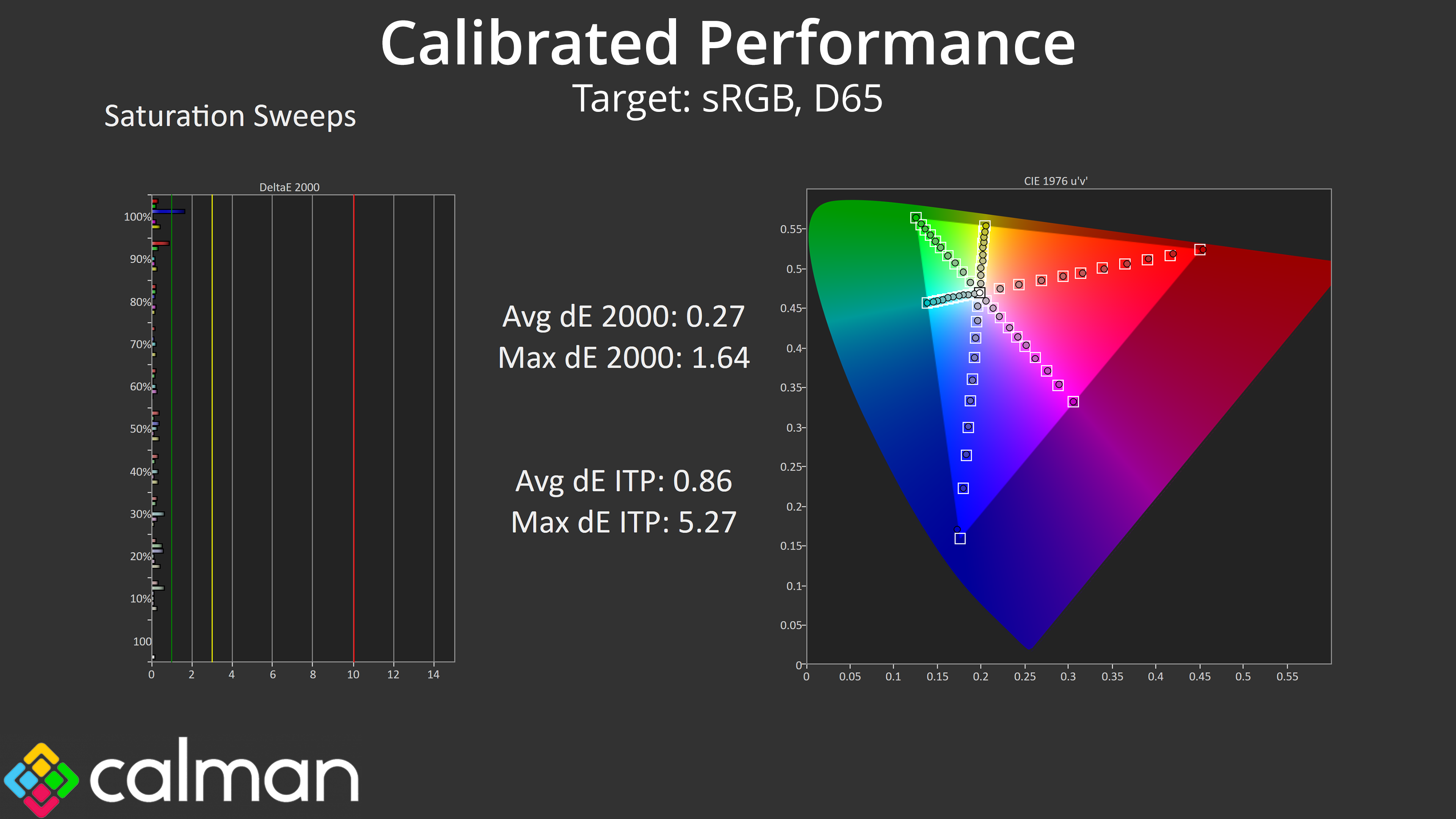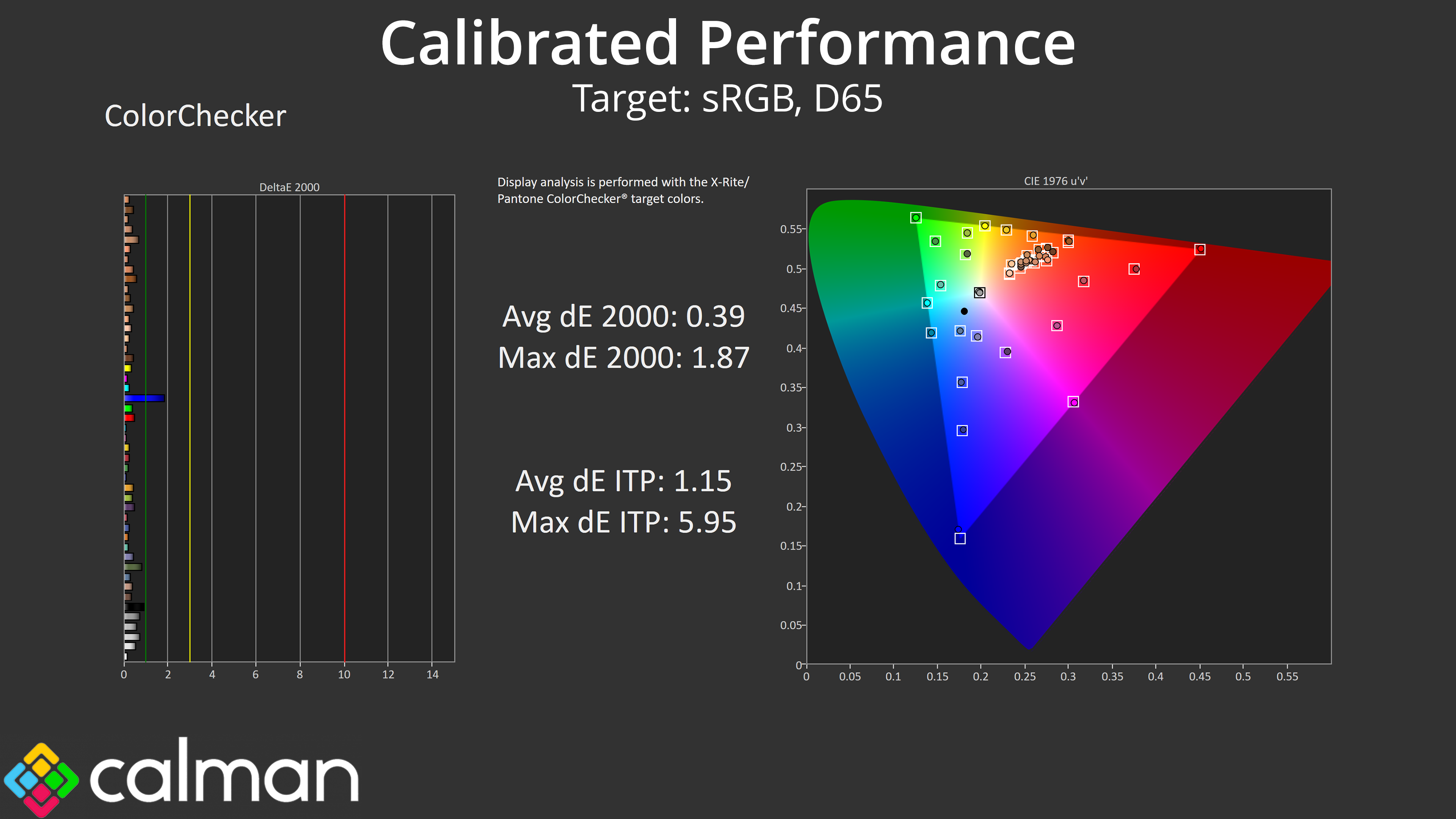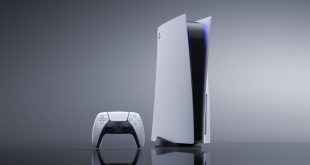Our main test involves using an X-Rite i1 Display Pro Plus colorimeter and utilising Portrait Display's Calman Ultimate software. The device sits on top of the screen while the software generates colour tones and patterns, which it compares against predetermined values to work out how accurate the screen is.
The results show:
- A monitor’s maximum brightness in candelas or cd/m2 at various levels set in the OSD.
- A monitor’s contrast ratio at various brightness levels in the OSD.
- Gamut coverage, primarily focusing on sRGB and DCI-P3 colour spaces.
- Greyscale accuracy, measured across 20 shades, with an average colour balance reported.
- The exact gamma levels, with a comparison against preset settings in the OSD.
- The colour accuracy, expressed as a Delta E ratio, with a result under 3 being fine for normal use, and under 2 being great for colour-accurate design work.
We first run these tests with the display in its out-of-the-box state, with all settings on default. If there is an sRGB emulation option or other useful mode then we may test that too. We then calibrate the screen using the Calman Ultimate software and run the tests again.
You can read more about our test methodology HERE.
Default settings
Brightness and Contrast (Full Screen)
| OSD Brightness | White Luminance (cd/m2) | Black Luminance (cd/m2) | Contrast Ratio |
| 0% | 53.6 | 0.062 | 861:1 |
| 25% | 156 | 0.181 | 863:1 |
| 50% | 255.3 | 0.294 | 867:1 |
| 75% | 351.5 | 0.406 | 867:1 |
| 100% | 444.8 | 0.514 | 866:1 |
Starting our testing with brightness, the minimum of 53.6 nits is fine, while the maximum comes in just below 450 nits, so that's about 50 nits brighter than the U27G4R. However, black levels aren't the best, resulting in contrast of around 860:1. Even by IPS standards that is quite low, given modern screens will be hitting at least 1000:1 and often more like 1200:1 nowadays.
Gamut (CIE 1976)
| Colour space | Coverage (%) |
| sRGB | 99.2 |
| DCI-P3 | 96.2 |
| Adobe RGB | 95.5 |
| Rec.2020 | 72.4 |
The gamut is pleasingly wide though, generally exceeding the sRGB space and offering 96.2% coverage of DCI-P3, 95.5% reporting for Adobe RGB and 72.4% for Rec.2020, which is not bad at all considering the price.
Greyscale
I'm also pleased to say ASUS has done a good job with the factory calibration. The colour balance is generally very accurate, averaging 6413K, with only the slightest of warm tints but nothing that was really visible to my eye. Gamma gets a little high toward the end of the curve but is fine overall, averaging 2.269. All in all that gives an average greyscale deltaE 2000 of just 1.32, a very good result indeed.
Saturation
Given the wide gamut on show, we do see a good amount of oversaturation relative to sRGB, though compared against the DCI-P3 space, the average dE 2000 of just 1.37 is very good.
Colour Accuracy
The same goes for our colour accuracy testing. The sRGB space shows the effects of the oversaturation and colours aren't particularly accurate, averaging a dE 2000 of 3.77. Relative to the DCI-P3 space though, things are much improved, with a new average dE of 1.62 – not bad at all for a £300 gaming monitor!
sRGB Emulation Mode
Thankfully there is an sRGB mode included – well, technically there are two! You can enable the sRGB mode via the ‘GameVisual' setting, or you can enable the sRGB space from within the ‘Colour Space' setting. I’m not quite sure why there are two options but I found that using the GameVisual setting gives the most accurate results, clamping the gamut fairly well and keeping an accurate greyscale. Both the saturation and colour accuracy average dE 2000 results also hover between 1.5-1.6, so that's a noticeable improvement over the default results and it's well worth using if you want to reduce oversaturation.
Calibrated Results
Of course, for the best results we also ran a full calibration, and that led to stellar accuracy across the board. I can't imagine too many people will be calibrating a £300 gaming monitor, but it goes to show what the panel is capable of.
 KitGuru KitGuru.net – Tech News | Hardware News | Hardware Reviews | IOS | Mobile | Gaming | Graphics Cards
KitGuru KitGuru.net – Tech News | Hardware News | Hardware Reviews | IOS | Mobile | Gaming | Graphics Cards


